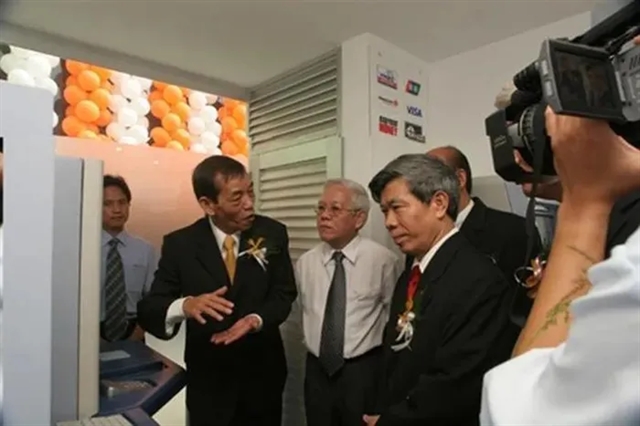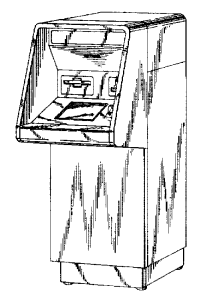 Society
Society


|
| Đỗ Đức Cường (speaking)'s design and innovations to the ATM helped the machine better reach its customers. — Photo baomoi.com |
HCM CITY — When it was first introduced in 1939, the ATM was perceived as a failure. Since then, many innovations have been made to create and perfect one of today's most important utilities. One such innovation belonged to Vietnamese-born inventor Đỗ Đức Cường.
Born and raised in Đức Phổ, Quảng Ngãi, Cường endured poverty in his childhood. The future inventor then resolved to study hard and overcome his obstacles.
He studied at the University of Medicine and Pharmacy HCM City, but found his interests in the field of Mechanical Engineering at Phú Thọ University in HCM City.
In 1963, a group of Japanese researchers came to Việt Nam to seek Vietnamese intellectuals. Cường got the highest score on the test and got a scholarship to study at the University of Osaka. During his time in Japan, Cường also worked at Toshiba Corporation.
After graduating from the University of Osaka, Cường continued his studies in the US, this time in the field of banking. He stuck with this profession until today as an executive, but still retained a passion for invention, with 58 patents relating to banking and communication technology.
Cường's talents and inventions soon attracted big corporations who were looking to improve their businesses. In 1977, Walter Briston, then CEO of Citibank, personally offered Cường a job at one of the US' biggest banks, to make Citibank's banking technology better, one of which resides in their ATMs.
Back in the 70s, ATMs were faulty and not popular among people. Users were hesitant because ATMs were not easy to use.
The first ATMs were also somewhat inconvenient – big, heavy and difficult to transport. They were also not placed in convenient locations.
Also, old-tech ATMs could only provide a set amount of money encoded on a card by the bank, and the customer could not freely choose the amount they wanted to withdraw.
These hindrances in technology almost spelled the doom of ATMs, since it is a technology that seemed not to be for everyone. However, the convenience of not having to travel to a bank and withdraw money, along with all the paperwork that go with it, meant many still had a favourable opinion of ATMs.
Many advances in technology have been made during the last 50 years to make ATMs lighter, better, faster and safer. These efforts resulted in increasing usage.
In the 1970s, there were only 1,500 ATM machines in the world, mostly in Japan and Western countries. Ten years later, the number grew to 40,000 and reached one million by the millennium.
Đỗ Đức Cường's patent No. D386883, recognised by the United States Patent and Trademark Office in 1997, is one of the most important innovations to the design of the ATM.

|
| Đỗ Đức Cường's design for the ATM — Photo United States Patent and Trademark Office |
The sleek, simple design better helped the installation of the ATM in many places, making it easier to reach customers.
In his 20 years at Citibank, Cường and his peers improved the ATMs and helped the banking giant expand its operations.
"In my time at Citibank, there is one thing that I realised," said Cường, "If banks do not see common people as potential customers, they will never grow. A bank that brings their services to the masses is one that will find success."
In 2006, Đỗ Đức Cường was given the Honour of Việt Nam award. Outside of his work in banking and inventing, Cường is also well-known as an expert in medicine, technology and economics. — VNS




